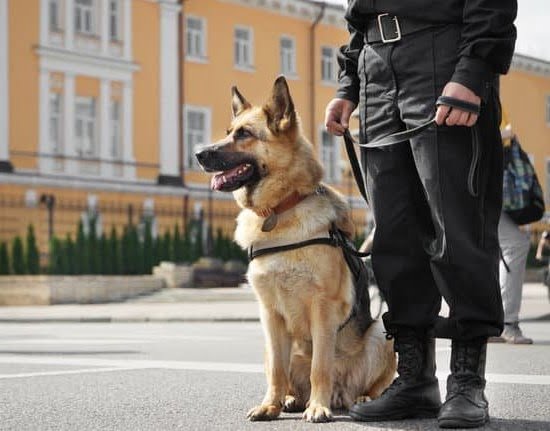Service dogs play a critical role in supporting individuals with disabilities and special needs, providing vital assistance and companionship. From guiding the visually impaired to alerting those with hearing loss, these highly trained animals perform a wide range of tasks to enhance the quality of life for their handlers. In this article, we will delve into the world of service dogs, exploring their functions, training process, specific tasks, legal rights, and the impactful benefits they provide.
Service dogs come in various types, each with its own set of functions tailored to address specific disabilities and special needs. The training process for these remarkable animals is an intricate and rigorous one, involving extensive behind-the-scenes work by dedicated trainers. Through this insider’s perspective, we will gain insight into the hard work and dedication that goes into preparing service dogs for their important roles.
In our exploration of what service dogs are trained for, we will uncover the specific tasks and abilities that make them indispensable to individuals with disabilities. From physical assistance to emotional support and mental health benefits, the impact of service dogs on their handlers is profound. Additionally, we will also examine the legal rights and protections afforded to service dogs and their handlers in public spaces.
Understanding the Different Types of Service Dogs and Their Functions
Service dogs are specifically trained to provide assistance and support to individuals with disabilities and special needs. They undergo rigorous training to perform a variety of tasks and functions that help their handlers overcome physical, emotional, and mental challenges. There are different types of service dogs, each specializing in specific functions based on the needs of their handlers.
Some common types of service dogs include guide dogs for individuals who are blind or visually impaired, hearing dogs for those who are deaf or hard of hearing, mobility assistance dogs for individuals with mobility impairments, medical alert dogs for detecting seizures, diabetes, or other medical conditions, and psychiatric service dogs for individuals with mental health conditions such as PTSD or anxiety disorders.
Types of Service Dogs and Their Functions
- Guide Dogs: Trained to assist individuals who are blind or visually impaired by navigating obstacles and providing guidance.
- Hearing Dogs: Alert their handlers to important sounds such as doorbells, alarms, or approaching vehicles.
- Mobility Assistance Dogs: Help individuals with physical disabilities by retrieving items, opening doors, and providing stability while walking.
- Medical Alert Dogs: Can detect changes in their handler’s body odor or behavior to alert them before the onset of a medical emergency.
- Psychiatric Service Dogs: Provide support to individuals with mental health conditions by offering emotional comfort and performing specific tasks during times of distress.
These service dogs undergo specialized training based on the specific needs of their handlers. Through their unique abilities and functions, service dogs play an invaluable role in enhancing the quality of life for their handlers. They provide not only practical assistance but also emotional support and companionship. What Are Service Dogs Trained For is essential knowledge as it sheds light on the incredible abilities these animals possess in helping individuals with disabilities lead more independent lives.
The Training Process for Service Dogs
Service dogs undergo a rigorous and extensive training process to prepare them for their important roles in assisting individuals with disabilities and special needs. This training process provides a behind-the-scenes look into the dedication, hard work, and specialized techniques that go into producing highly skilled service dogs.
One of the key aspects of the training process for service dogs is socialization. Service dogs are exposed to a wide variety of environments, people, and other animals from a young age to ensure that they remain calm, focused, and well-behaved in any situation. This socialization helps them to adapt to different settings and interact appropriately with their handlers and the public.
In addition to socialization, service dogs are trained to perform specific tasks based on the needs of their handlers. These tasks can range from guiding individuals with visual impairments safely through obstacles to alerting individuals with hearing impairments to important sounds.
Service dogs can also be trained to retrieve items, provide balance support, or even detect medical issues such as seizures or changes in blood sugar levels. The specialized training that service dogs undergo equips them with the skills needed to support their handlers in daily life and emergency situations alike.
| Training Process Component | Description |
|---|---|
| Socialization | Exposure to various environments, people, and animals |
| Task-Specific Training | Teaching service dogs specific skills tailored to their handler’s needs |
What Are Service Dogs Trained For
Service dogs undergo extensive training to perform a wide range of specific tasks and abilities to assist individuals with disabilities and special needs. These highly skilled animals are trained to provide essential support and aid in daily living activities for their handlers, making a significant impact on their quality of life.
Assistance With Mobility
One of the primary tasks that service dogs are trained for is providing mobility assistance to individuals with physical disabilities. These dogs are taught to retrieve items, open doors, push buttons, and even assist with balance support for individuals using wheelchairs or walkers. Their training allows them to perform these tasks reliably and safely, giving their handlers newfound independence and freedom of movement.
Medical Alert and Response
Service dogs are also trained to detect medical conditions such as seizures, diabetes, or allergies in their handlers. Through scent recognition and behavioral cues, these remarkable animals can alert their owners or caregivers before an impending medical episode occurs. They can also be trained to respond by fetching medication or activating emergency response devices when needed.
Emotional Support and Comfort
In addition to their physical assistance, service dogs are trained to provide emotional support to individuals with psychiatric disorders such as PTSD, anxiety, or depression. Their calming presence and unconditional love help reduce stress levels and provide comfort during challenging situations. With specialized training in recognizing signs of distress and offering grounding techniques, service dogs play a vital role in supporting the mental health of their handlers.
Understanding the diverse range of tasks and abilities that service dogs are trained for underscores the invaluable contribution they make to enhance the lives of individuals with disabilities and special needs. These highly-trained animals serve as loyal companions, trusted aides, and crucial partners in empowering their handlers to overcome challenges and live more fulfilling lives.
The Impact of Service Dogs on Individuals With Disabilities and Special Needs
Service dogs play a crucial role in the lives of individuals with disabilities and special needs, providing them with constant support, independence, and companionship. These specially trained dogs are equipped to assist people with a wide range of disabilities, including physical, sensory, psychiatric, neurological, and medical conditions. The impact of service dogs on the lives of their handlers is profound and far-reaching, enabling them to navigate daily tasks and activities with greater ease and confidence.
Enhancing Independence and Mobility
For individuals with physical disabilities, service dogs are trained to perform tasks such as retrieving items, opening doors, turning lights on and off, assisting with dressing and undressing, and even helping their handlers transfer from a wheelchair to a bed or vice versa. Additionally, these remarkable animals can provide stability and balance support for those with mobility impairments as they navigate various environments.
Providing Emotional Support and Comfort
Beyond the practical assistance that service dogs offer, they also provide emotional support for individuals with disabilities or special needs. These loyal companions are trained to respond to their handler’s anxiety attacks or panic episodes by offering deep pressure therapy, bringing medications or water bottles when needed, and providing constant reassurance through comforting presence.
Assistance for Medical Alert Conditions
In many cases, service dogs are specifically trained to detect changes in the body that signal an impending medical crisis such as an epileptic seizure or diabetic episode. These vigilant canines are capable of alerting their handlers before a serious medical event occurs so that appropriate measures can be taken promptly. This level of support can be life-saving for individuals who live with severe medical conditions.
The Legal Rights and Protections of Service Dogs and Their Handlers
Service dogs are incredible animals that undergo intensive training to assist individuals with disabilities and special needs. But what are service dogs trained for, specifically? These highly skilled companions are trained to perform a wide range of tasks and functions tailored to the specific needs of their handlers. From guiding individuals who are blind or visually impaired to alerting those with hearing impairments, service dogs play a crucial role in enhancing the independence and quality of life for their handlers.
One common task that service dogs are trained for is mobility assistance. This includes helping individuals with physical disabilities by retrieving dropped items, opening doors, and even providing stability while walking. Additionally, some service dogs are trained to detect and respond to medical emergencies such as seizures or diabetic episodes. These remarkable animals can also provide psychiatric support by offering grounding techniques during anxiety or panic attacks.
Service dogs are typically trained through a rigorous process that begins at a young age and involves specialized instruction from professional trainers. The training curriculum often includes obedience training, socialization in various environments, exposure to different stimuli, and specific task training based on the handler’s needs.
It’s important to note that the specific tasks and abilities of service dogs can vary depending on their designated role, whether it be guide dogs for the blind, hearing dogs for the deaf, mobility assistance dogs, medical alert dogs, or psychiatric service dogs.
| Types of Service Dogs | Specific Tasks |
|---|---|
| Guide Dogs | Assist individuals who are blind or visually impaired with navigation |
| Hearing Dogs | Alert individuals with hearing impairments to important sounds or signals |
| Mobility Assistance Dogs | Retrieve items, open doors, provide stability while walking |
The Benefits of Service Dogs for Emotional Support and Mental Health
Service dogs are not only a crucial support system for individuals with physical disabilities but also play a significant role in providing emotional support and improving mental health. These specially trained dogs offer companionship, comfort, and a sense of security to those struggling with various psychological challenges. One of the key benefits of service dogs for emotional support and mental health is their ability to assist individuals with anxiety, PTSD, depression, and other mental health conditions.
For individuals with anxiety disorders, service dogs are trained to provide a calming presence and offer tactile stimulation through deep pressure therapy. This can help alleviate symptoms of anxiety and panic attacks, as well as provide a sense of grounding during distressing situations. Additionally, service dogs are trained to recognize signs of an impending anxiety attack and can intervene by nuzzling or nudging their handler to redirect their focus and provide comfort.
Moreover, for individuals dealing with post-traumatic stress disorder (PTSD), service dogs can be trained to create physical barriers between their handler and potential triggers in crowded or overwhelming environments. These loyal companions can also perform behavior interruption tasks to help break the cycle of PTSD-related flashbacks or nightmares. By providing constant companionship and unconditional support, service dogs contribute significantly to improving the overall well-being of individuals struggling with mental health challenges.
How to Support and Advocate for the Rights of Service Dogs in Public Spaces
Service dogs play a crucial role in the lives of individuals with disabilities and special needs, providing them with the necessary support and assistance to navigate daily life. However, despite their invaluable service, service dogs and their handlers often face challenges and obstacles when it comes to accessing public spaces. It is essential for the community to understand how to support and advocate for the rights of service dogs in these settings.
One way to support service dogs in public spaces is by educating the public about the important work that these animals do. Many people may not fully understand what service dogs are trained for and may inadvertently hinder their ability to perform their tasks effectively. By raising awareness about the specific tasks and abilities of service dogs, individuals can gain a better understanding of how they can support these animals in public settings.
Advocating for the rights of service dogs also involves encouraging businesses and establishments to comply with laws that protect the rights of individuals with disabilities who rely on these animals. This may include familiarizing businesses with the legal requirements for accommodating service dogs, as well as addressing any instances of discrimination or refusal of access. By actively promoting adherence to these laws, advocates can help ensure that service dogs and their handlers are treated fairly in public spaces.
Supporting and advocating for the rights of service dogs in public spaces ultimately contributes to creating a more inclusive and accessible environment for individuals with disabilities. Through education, awareness, and advocacy efforts, communities can work towards fostering a greater understanding and acceptance of the vital role that service dogs play in enhancing the lives of those they serve.
Conclusion
In conclusion, the work of service dogs is truly lifesaving and life-changing for individuals with disabilities and special needs. Service dogs are trained to perform a wide range of specific tasks and abilities that assist their handlers in various aspects of daily life. Whether it’s guiding the visually impaired, alerting for medical emergencies, providing mobility support, or offering emotional comfort, these highly trained animals play a crucial role in enhancing the quality of life for their handlers.
The impact of service dogs on individuals with disabilities goes beyond just practical assistance. These incredible animals also provide emotional support and mental health benefits for their handlers. Their constant companionship can alleviate feelings of loneliness, anxiety, and depression, contributing to an overall sense of well-being. The bond between a service dog and their handler is truly remarkable, as they form a partnership based on trust, understanding, and reliance.
As advocates for the rights of service dogs in public spaces, it’s important to recognize and support the vital work that these animals do. By understanding what service dogs are trained for and respecting their role in society, we can contribute to creating a more inclusive and accessible environment for individuals with disabilities.
It’s essential to raise awareness about the legal rights and protections of service dogs and their handlers, ensuring that they are not denied access or discriminated against due to misconceptions about their purpose. The ongoing support for service dogs ultimately promotes independence, safety, and equality for those who rely on these amazing animals every day.
Frequently Asked Questions
Why Do People Use Service Dogs?
People use service dogs for a variety of reasons, including physical disabilities, visual impairment, diabetes, epilepsy, and psychiatric conditions such as anxiety or PTSD. These highly trained dogs can provide support and assistance to their handlers in carrying out daily tasks.
Which Is Not an Example of Tasks a Service Dog Might Provide?
Service dogs can be trained to perform various tasks depending on the handler’s needs. Examples include guiding individuals with visual impairment, alerting those with hearing loss to important sounds, providing balance and stability for individuals with mobility issues, retrieving objects, and even detecting oncoming seizures or changes in blood sugar levels.
However, delivering mail is not a task typically performed by service dogs.
Can Someone Ask Me for Papers on My Service Dog?
Yes, it is legal for someone to ask you for documentation regarding your service dog if they have doubts about the animal’s status.
While the Americans with Disabilities Act (ADA) does not require service animals to wear special vests or carry specific ID cards, businesses and establishments are allowed to ask certain questions about the dog’s training and function as a service animal in order to ensure compliance with ADA regulations.

Welcome to the blog! I am a professional dog trainer and have been working with dogs for many years. In this blog, I will be discussing various topics related to dog training, including tips, tricks, and advice. I hope you find this information helpful and informative. Thanks for reading!





